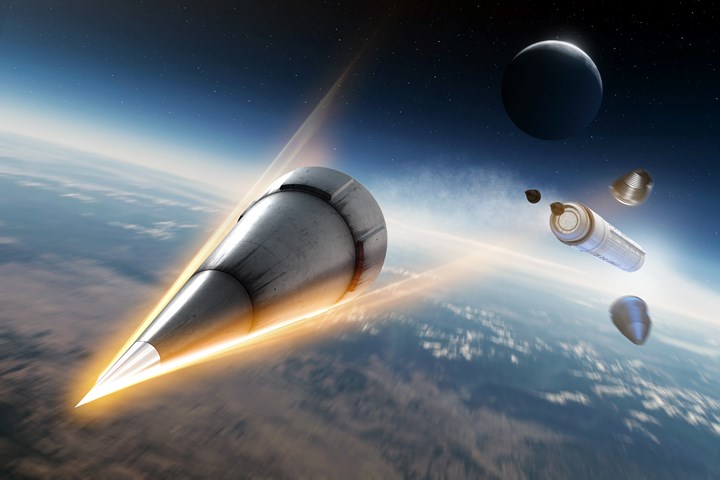Boston Materials, Textron Systems to collaborate on hypersonic vehicle thermal protection system
Boston Materials will supply Textron Systems with its Z-axis Fiber technology to enhance performance of high-temperature composites that exceed 3,000°F.
Share
Read Next
Boston Materials will work with Textron Systems to integrate Boston Materials’ Z-axis Fiber technology into thermal protection systems for space launch vehicles. Photo Credit: Boston Materials
Boston Materials (Billerica, Mass., U.S.) and Textron Systems (Wilmington, Mass., U.S.) announced on July 26 a partnership to develop a thermal protection system (TPS) that will enable higher durability and reduce the deployment costs of hypersonic vehicles.
The new TPS, which is applied externally to the outer structural skin of a launch vehicle to protect from temperature extremes generated during atmospheric re-entry, will include Boston Materials’ patented Z-axis Fiber technology. As the name implies, Z-axis Fiber works in the z-direction in a composite laminate to enhance interlaminar shear strength (ILSS) and through-plane properties. Anvesh Gurijala, CEO of Boston Materials, says his company’s Z-axis Fiber will be applied to the Textron Systems TPS in a carbon-carbon composite (CCC) that, initial tests show, is expected to offer a 30% increase in ILSS.
Further, Gurijala says, from a manufacturing standpoint the Z-axis Fiber technology facilitates escape of process gases, which reduces risk of voids and improves laminate porosity. The result is a carbon-carbon structure manufactured with a better controlled process, which produces more predictable and dependable properties in the finished structure. The expectation is that the resulting better performing TPS will enable lower cost deployment of hypersonic vehicles, and turnaround of reusable launch vehicles and other spacecraft more quickly than possible now with legacy TPS structures.
“We will deliver a 3D reinforcement that will be added to a 2D material and then integrated into a conventional manufacturing workflow,” Gurijala says. “This is a game-changing enabler that will enable faster [vehicle] turnarounds, more durability, an increased factor of safety and more lightweighting opportunities.”
Textron Systems and Boston Materials will spend the next two or so years qualifying Z-axis Fiber for the TPS application, Gurijala says, with special attention paid to aerospace certifications and quality control requirements as required by the application. Assuming qualification is successful, the enhanced TPS will be offered by Textron Systems as a platform product to a variety of launch vehicle manufacturers. “Our materials have been tested by aerospace customers before,” Gurijala says, “but this is the first opportunity we’ve had to qualify our material for a flight application.”
Z-axis Fiber is manufactured by Boston Materials using a proprietary fiber-manipulation process to orient milled carbon fibers vertically in a single layer that is subsequently deposited onto a plastic film carrier. This film is then used to integrate the carbon fibers into a laminate structure, where they enhance interlaminar strength properties by providing an interply z-direction fiber interface.
Related Content
-
ASCEND program update: Designing next-gen, high-rate auto and aerospace composites
GKN Aerospace, McLaren Automotive and U.K.-based partners share goals and progress aiming at high-rate, Industry 4.0-enabled, sustainable materials and processes.
-
Next-generation airship design enabled by modern composites
LTA Research’s proof-of-concept Pathfinder 1 modernizes a fully rigid airship design with a largely carbon fiber composite frame. R&D has already begun on higher volume, more automated manufacturing for the future.
-
Combining multifunctional thermoplastic composites, additive manufacturing for next-gen airframe structures
The DOMMINIO project combines AFP with 3D printed gyroid cores, embedded SHM sensors and smart materials for induction-driven disassembly of parts at end of life.
















.jpg;maxWidth=300;quality=90)
